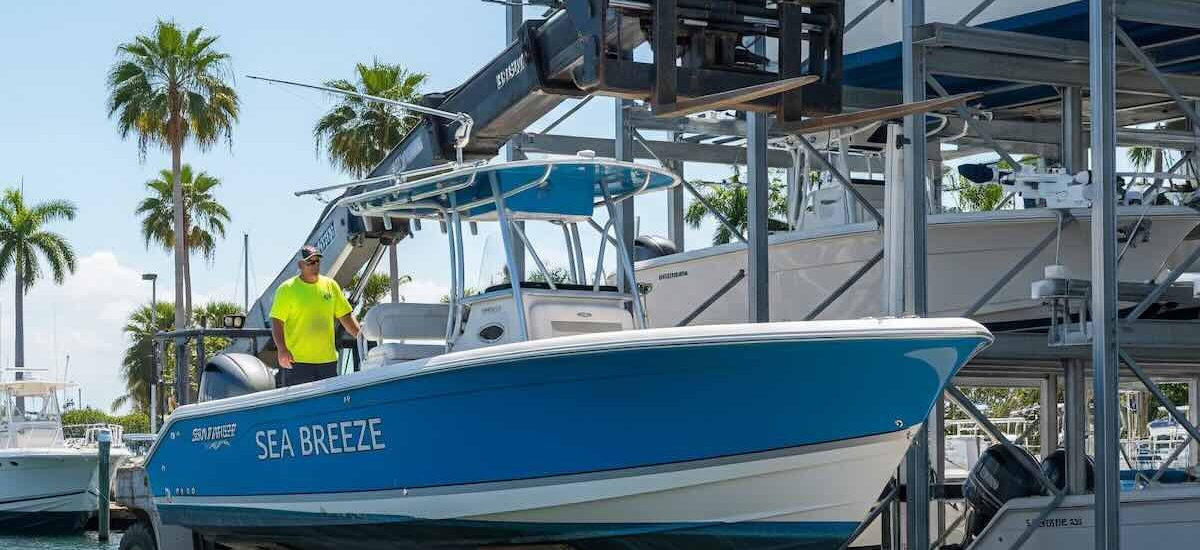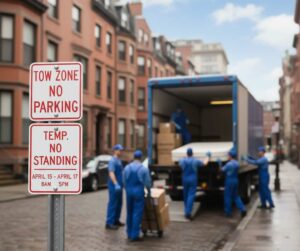We’ve moved you to Florida, you got yourself a boat, so what’s next? Boat storage in the off-season isn’t just about finding space, it’s about keeping it safe from damage, theft, and extra costs. Whether you’re moving or just parking it for the winter, the right spot means it’ll be ready to go when you are. Here are some tips for storing your boat in 2025 so it stays in good shape.
Why Boat Storage Matters
Boats are vulnerable to weather, theft, and neglect. Over 4,000 boats are stolen annually in the U.S., per the National Insurance Crime Bureau, and exposure to humidity or UV rays can cause mold, fading, or engine damage. Storage is critical during a move if your new home lacks dock access or space, or during the off-season to protect your vessel from harsh weather.
Finding a facility with enough space for your boat, typically 20 – 40 feet long, requiring a 10×30 or larger unit, can be challenging, per Extra Space Storage.
Choosing the Right Storage Option
The best storage option for your boat depends on its size, your budget, and the level of protection needed. Here’s a comparison of the main choices to guide your decision:
- Indoor Storage Units: A 10×30 unit (300 square feet) fits most boats under 30 feet, offering top protection against weather and theft. Climate-controlled units prevent mold and electronics damage, costing $150 – $400 per month.Ideal for long-term storage but may have limited access hours.
- Outdoor Storage Lots: Outdoor lots are budget-friendly, costing $50 – $150 per month, with covered options providing partial protection from rain and sun. They’re less secure and expose boats to elements, risking fading or hull damage.
- Portable Storage Containers: Companies like PODS offer large containers for driveway packing, then transport them to secure facilities, per PODS. These cost $150 – $300 per month and suit short-term moves but often lack climate control, requiring extra care for sensitive components.
- Marina or Dry Stack Storage: Marinas provide dry stack storage for smaller boats (under 25 feet), with easy water access but higher costs ($200–$500/month), per BoatUS. Great for frequent boaters but less practical during a move.
| Storage Type | Cost (Per Month) | Security Features | Suitability |
|---|---|---|---|
| Indoor Storage Units | $150–$400 | 24/7 surveillance, gated access, climate control | Long-term, sensitive boats |
| Outdoor Storage Lots | $50–$150 | Gated access, some surveillance | Short-term, budget-conscious |
| Portable Storage Containers | $150–$300 | Secure facility storage, lockable containers | Short-term, driveway packing |
| Marina/Dry Stack Storage | $200–$500 | Surveillance, water access | Frequent boaters, smaller boats |
Preparing Your Boat for Storage
Proper preparation ensures your boat stays in top condition during storage. Follow these steps to protect your vessel:
- Clean Thoroughly: Wash the hull, deck, and interior to remove salt, dirt, or algae that could cause corrosion or mold. Apply wax to protect the finish and treat canvas covers to prevent cracking.
- Fluid Management: Add fuel stabilizer to gas tanks and run the engine, or drain fluids for long-term storage to avoid engine damage, per BoatUS.
- Battery Care: Disconnect batteries or use a trickle charger to maintain charge, especially in climate-controlled units, to prevent degradation.
- Winterization (if applicable): Drain water systems and add antifreeze to plumbing and engines in cold climates to prevent freezing, per Store Space.
- Cover Properly: Use a fitted, breathable cover for indoor storage or a waterproof, UV-resistant cover for outdoor storage to protect against moisture and sun.
Challenges include facility bans on maintenance (e.g., no repairs in units) and ensuring proper winterization to avoid costly damage. Coastal Moving Services connects you with movers who handle preparation and transport safely.
Security and Accessibility for Boat Storage
Security is vital, with over 4,000 boats stolen yearly in the U.S., per NICB. Choose storage with 24/7 surveillance, gated access, and on-site management to protect your vessel. Accessibility matters if you need to check your boat during a move or off-season; indoor units may have limited hours, while marinas and portable containers offer more flexibility.
Urban parking restrictions or HOA rules for driveway storage can complicate plans.
Frequently Asked Questions About Boat Storage
What size storage unit fits a boat?
A 10×30 unit (300 square feet) fits most boats under 30 feet. Larger boats may need a 10×40 unit.
Can I use a portable container for boat storage?
PODS offers large containers for driveway packing, then transports them to secure facilities.
Is climate control necessary for boats?
Climate-controlled units ($200 – $400/month) protect electronics and interiors from humidity.
How do I prevent theft during storage?
Choose facilities with 24/7 surveillance and gated access. Over 4,000 boats are stolen yearly, per NICB.
What items can’t be stored with my boat?
Flammable liquids, perishables, and unregistered boats are prohibited.
Storing your boat during a move or off-season protects it from theft, weather, and damage. Opt for a 10×30 indoor unit, portable container, or marina storage, and prepare with cleaning, fluid management, and proper covering.








